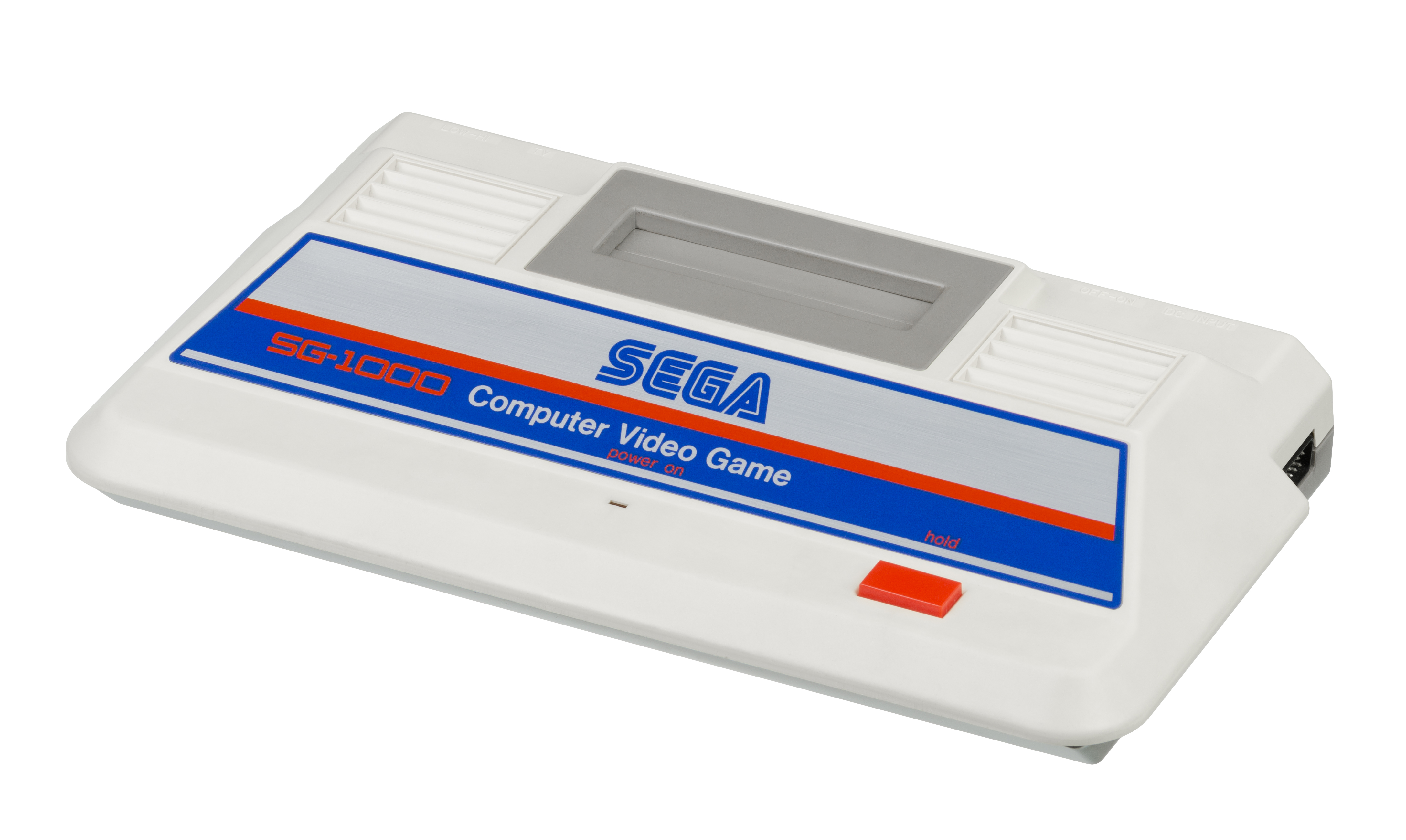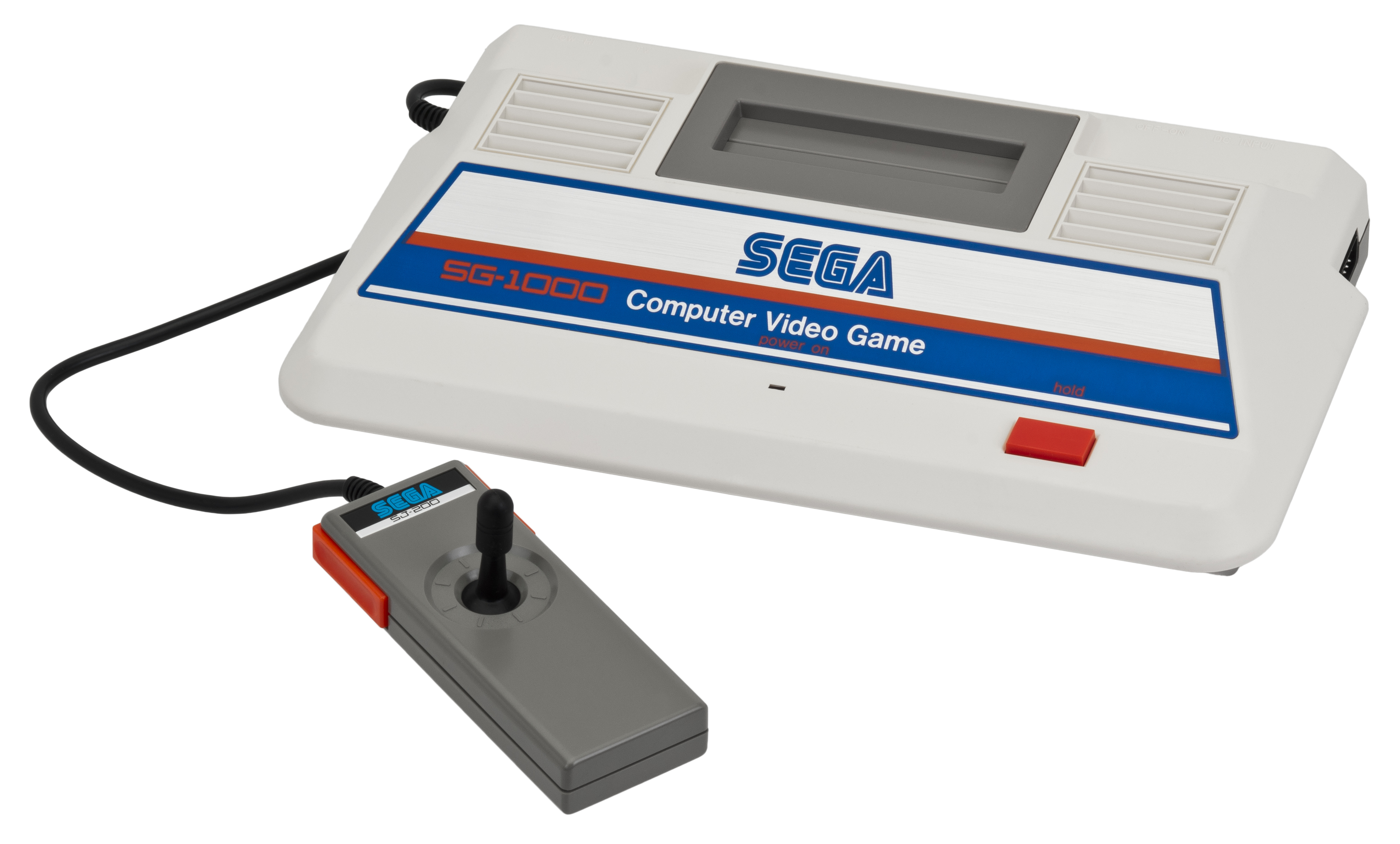|
SC-3000
The is a home video game console manufactured by Sega. It was Sega's first entry into the home video game hardware business. Developed in response to a downturn in Arcade game, arcades starting in 1982, the SG-1000 was created on the advice of Hayao Nakayama, president of Sega's Japanese arm, and was released on July 15, 1983, the same day that Nintendo released the Nintendo Entertainment System, Family Computer in Japan. It also saw limited release in Australia and New Zealand. The SG-1000 was released in several forms, including the SC-3000 computer and the redesigned SG-1000 II released in 1984. The SG-1000 and the SC-3000 both support a library of 76 ROM cartridge games and 29 Sega Card, Sega My Card games. A third iteration of the console, the Sega Mark III, was released in 1985. It provided an improved custom video display processor over previous iterations and served as the basis for the Master System in 1986, Sega's first internationally released console. All SG-1000 ... [...More Info...] [...Related Items...] OR: [Wikipedia] [Google] [Baidu] |
Sega Card
The Sega Card, known in Japan as Sega My Card, is a memory card format used as game storage for the SG-1000/ SC-3000 and the Mark III/Master System. Produced from 1983 to 1987 by Mitsubishi Plastics, the cards are plugged into onboard cardslots or into compatible adapters. Several versions of the format were created, including a rewritable one that allows new titles to be downloaded to a card. While substantially cheaper to produce than cartridges, the storage limitations of the format resulted in Sega exclusively distributing games on cartridges. Despite the failure of the Sega Card, NEC found more success with its own memory card format, the HuCard, which was the primary storage medium for its PC Engine game console. History The format was originally released in 1983 in the Japanese market, under the name My Card. Initially it was for use with the SC-3000 and the SG-1000 series of consoles via an optional accessory, the Card Catcher. Later Sega platforms, the Sega Mark II ... [...More Info...] [...Related Items...] OR: [Wikipedia] [Google] [Baidu] |
Master System
The is an 8-bit History of video game consoles (third generation), third-generation home video game console manufactured by Sega. It was originally a remodeled export version of the Sega Mark III, the third iteration of the SG-1000 series of consoles, which was released in Japan in 1985 and featured enhanced graphical capabilities over its predecessors. The Master System launched in North America in 1986, followed by Europe in 1987, and then in Brazil and Korea in 1989. A Japanese version of the Master System was also launched in 1987, which features a few enhancements over the export models (and by proxy the original Mark III): a built-in Yamaha YM2413, FM audio chip, a rapid-fire switch, and a dedicated port for the 3D glasses. The Master System II, a cheaper model, was released in 1990 in North America, Australasia and Europe. The original Master System models use both Game cartridge, cartridges and a credit card-sized format known as Sega Cards. Accessories for the console ... [...More Info...] [...Related Items...] OR: [Wikipedia] [Google] [Baidu] |
Sega Mark III
The is an 8-bit third-generation home video game console manufactured by Sega. It was originally a remodeled export version of the Sega Mark III, the third iteration of the SG-1000 series of consoles, which was released in Japan in 1985 and featured enhanced graphical capabilities over its predecessors. The Master System launched in North America in 1986, followed by Europe in 1987, and then in Brazil and Korea in 1989. A Japanese version of the Master System was also launched in 1987, which features a few enhancements over the export models (and by proxy the original Mark III): a built-in FM audio chip, a rapid-fire switch, and a dedicated port for the 3D glasses. The Master System II, a cheaper model, was released in 1990 in North America, Australasia and Europe. The original Master System models use both cartridges and a credit card-sized format known as Sega Cards. Accessories for the consoles include a light gun and 3D glasses that work with a range of specially desi ... [...More Info...] [...Related Items...] OR: [Wikipedia] [Google] [Baidu] |
Sega SC-3000 Wb
is a Japanese multinational video game and entertainment company headquartered in Shinagawa, Tokyo. Its international branches, Sega of America and Sega Europe, are headquartered in Irvine, California and London, respectively. Its division for the development of both arcade games and home video games, Sega Games, has existed in its current state since 2020; from 2015 to that point, the two had made up separate entities known as Sega Games and Sega Interactive Co., Ltd. Sega is a subsidiary of Sega Sammy Holdings. From 1983 until 2001, Sega also developed video game consoles. Sega was founded by American businessmen Martin Bromley and Richard Stewart as on June 3, 1960; shortly after, the company acquired the assets of its predecessor, Service Games of Japan. Five years later, the company became known as Sega Enterprises, Ltd., after acquiring Rosen Enterprises, an importer of coin-operated games. Sega developed its first coin-operated game, ''Periscope'', in 1966. Sega wa ... [...More Info...] [...Related Items...] OR: [Wikipedia] [Google] [Baidu] |
Third Generation Of Video Game Consoles
In the history of video games, the third generation of game consoles, commonly referred to as the 8-bit era, began on July 15, 1983 with the Japanese release of two systems: Nintendo's Family Computer (commonly abbreviated to ''Famicom'') and Sega's SG-1000. When the Famicom was not released outside of Japan it was remodelled and marketed as the Nintendo Entertainment System (NES). This generation marked the end of the video game crash of 1983, and a shift in the dominance of home video game manufacturers from the United States to Japan. Handheld consoles were not a major part of this generation; the Game & Watch line from Nintendo (which started in 1980) and the Milton Bradley Microvision (which came out in 1979) that were sold at the time are both considered part of the previous generation due to hardware typical of the second generation. Improvements in technology gave consoles of this generation improved graphical and sound capabilities, comparable to golden age arcade ... [...More Info...] [...Related Items...] OR: [Wikipedia] [Google] [Baidu] |
Texas Instruments TMS9918
VDP TMS9918A VDP TMS9918A VDP TMS9928A The TMS9918 is a video display controller (VDC) manufactured by Texas Instruments, in manuals referenced as 'Video Display Processor' (VDP) and introduced in 1979. The TMS9918 and its variants were used in the ColecoVision, CreatiVision, Memotech MTX, MSX, NABU Personal Computer, SG-1000/ SC-3000, Spectravideo SV-318, Spectravideo SV-328, Sord M5, Tatung Einstein, Texas Instruments TI-99/4, Casio PV-2000, Coleco Adam, Hanimex Pencil II, and Tomy Tutor. The TMS9918 generates both grid-based character graphics (used to display text or background images) and sprites used for moving foreground objects. The key features of this chip are, as highlighted on a 1980 presentation by Karl Guttag (one of the designers): *256 by 192 full color pixels per screen *15 different colors and/or shades *Non-interlaced color composite video output *Direct wiring to RAS/CAS type dynamic RAMS *Automatic refresh of dynamic RAMS *General 8-bit memory ... [...More Info...] [...Related Items...] OR: [Wikipedia] [Google] [Baidu] |
Texas Instruments SN76489
The SN76489 Digital Complex Sound Generator (DCSG) is a TTL-compatible programmable sound generator chip from Texas Instruments. Its main application was the generation of music and sound effects in game consoles, arcade games and home computers (such as the TI-99/4A, BBC Micro, ColecoVision, IBM PCjr, Tomy Tutor, and Tandy 1000), competing with the similar General Instrument AY-3-8910. It contains: * 3 square wave tone generators. ** A wide range of frequencies. ** 16 different volume levels. * 1 noise generator. ** 2 types (white noise and periodic). ** 3 different frequencies. ** 16 different volume levels. Overview The SN76489 was originally designed to be used in the TI-99/4 computer, where it was first called the TMS9919 and later SN94624, and had a 500 kHz max clock input rate. Later, when it was sold outside of TI, it was renamed the SN76489, and a divide-by-8 was added to its clock input, increasing the max clock input rate to , to facilitate sharing a crysta ... [...More Info...] [...Related Items...] OR: [Wikipedia] [Google] [Baidu] |
Future Publishing
Future plc is an international multimedia company established in the United Kingdom in 1985. The company has over 220 brands that span magazines, newsletters, websites, and events in fields such as video games, technology, films, music, photography, home, and knowledge. Zillah Byng-Thorne has been CEO since 2014. The company is listed on the London Stock Exchange and is a constituent of the FTSE 250 Index. History 1985–2012 The company was founded as Future Publishing in Somerton, Somerset, England, in 1985 by Chris Anderson with the sole magazine ''Amstrad Action''. An early innovation was the inclusion of free software on magazine covers; they were the first company to do so. It acquired GP Publications so establishing Future US in 1994. From 1995 to 1997, the company published ''Arcane'', a magazine which largely focused on tabletop games. Anderson sold Future to Pearson plc for £52.7m in 1994, but bought it back in 1998, with Future chief executive Greg Ingham an ... [...More Info...] [...Related Items...] OR: [Wikipedia] [Google] [Baidu] |
Retro Gamer
''Retro Gamer'' is a British magazine, published worldwide, covering retro video games. It was the first commercial magazine to be devoted entirely to the subject. Launched in January 2004 as a quarterly publication, ''Retro Gamer'' soon became a monthly. In 2005, a general decline in gaming and computer magazine readership led to the closure of its publishers, Live Publishing, and the rights to the magazine were later purchased by Imagine Publishing. It was taken over by Future plc on 21 October 2016, following Future's acquisition of Imagine Publishing. History The first 18 issues of the magazine came with a coverdisk. It usually contained freeware remakes of retro video games and emulators, but also videos and free commercial PC software such as '' The Games Factory'' and '' The Elder Scrolls: Arena''. Some issues had themed CDs containing the entire back catalogue of a publisher such as Durell, Llamasoft and Gremlin Graphics. On 27 September 2005, the magazine's origina ... [...More Info...] [...Related Items...] OR: [Wikipedia] [Google] [Baidu] |
Gulf And Western
Gulf and Western Industries, Inc. (stylized as Gulf+Western) was an American conglomerate. Originally, the company focused on manufacturing and resource extraction. Beginning in 1966, and continuing throughout the 1960s and 1970s, the company purchased a number of entertainment companies, most notably Paramount Pictures in 1966, Desilu Productions in 1967, and a number of record companies, including Dot Records (a subsidiary of Paramount Pictures at the time of purchase) and Stax Records. These became the nuclei of Paramount Television and Paramount Records respectively. The company sold its non-publishing and entertainment assets through the course of the 1980s, with the company re-branding itself as Paramount Communications in 1989. A controlling interest of Paramount Communications was purchased by Viacom in 1994, and the entertainment assets of Gulf and Western are today part of the media conglomerate Paramount Global (also used the Paramount name as the holding company ... [...More Info...] [...Related Items...] OR: [Wikipedia] [Google] [Baidu] |
Condé Nast
Condé Nast () is a global mass media company founded in 1909 by Condé Montrose Nast, and owned by Advance Publications. Its headquarters are located at One World Trade Center in the Financial District of Lower Manhattan. The company's media brands attract more than 72 million consumers in print, 394 million in digital and 454 million across social platforms. These include '' Vogue'', '' The New Yorker'', '' Condé Nast Traveler'', '' GQ'', ''Glamour'', '' Architectural Digest'', '' Vanity Fair, Pitchfork'', '' Wired'', and '' Bon Appétit,'' among many others. US ''Vogue'' editor-in-chief Anna Wintour serves as Artistic Director and Global Chief Content Officer. In 2011, the company launched the Condé Nast Entertainment division, tasked with developing film, television, social and digital video, and virtual reality content. History The company traces its roots to 1909, when Condé Montrose Nast, a New York City-born publisher, purchased '' Vogue,'' a printed magazin ... [...More Info...] [...Related Items...] OR: [Wikipedia] [Google] [Baidu] |




